Abstract
Compared with whites, the acquired immune deficiency syndrome (AIDS) has affected blacks and Hispanics disproportionately. The cumulative incidence (CI) for black men was 2.6, and for Hispanic men 2.5, times the rate for white men. Intravenous (IV) needle use alone does not account for this difference. Not counting IV needle-using cases, the CIs for black and Hispanic men were 1.7 times the CI for white men. Although there were fewer cases in women than men, the white-to-minority disparity was greater for women. The CIs for black and Hispanic women were 12.2 and 8.5 times, respectively, the CI for white women. Prevention programs are urgently needed and should focus on risky behavior (IV needle sharing and receptive anal intercourse), not just risk groups.
Full text
PDF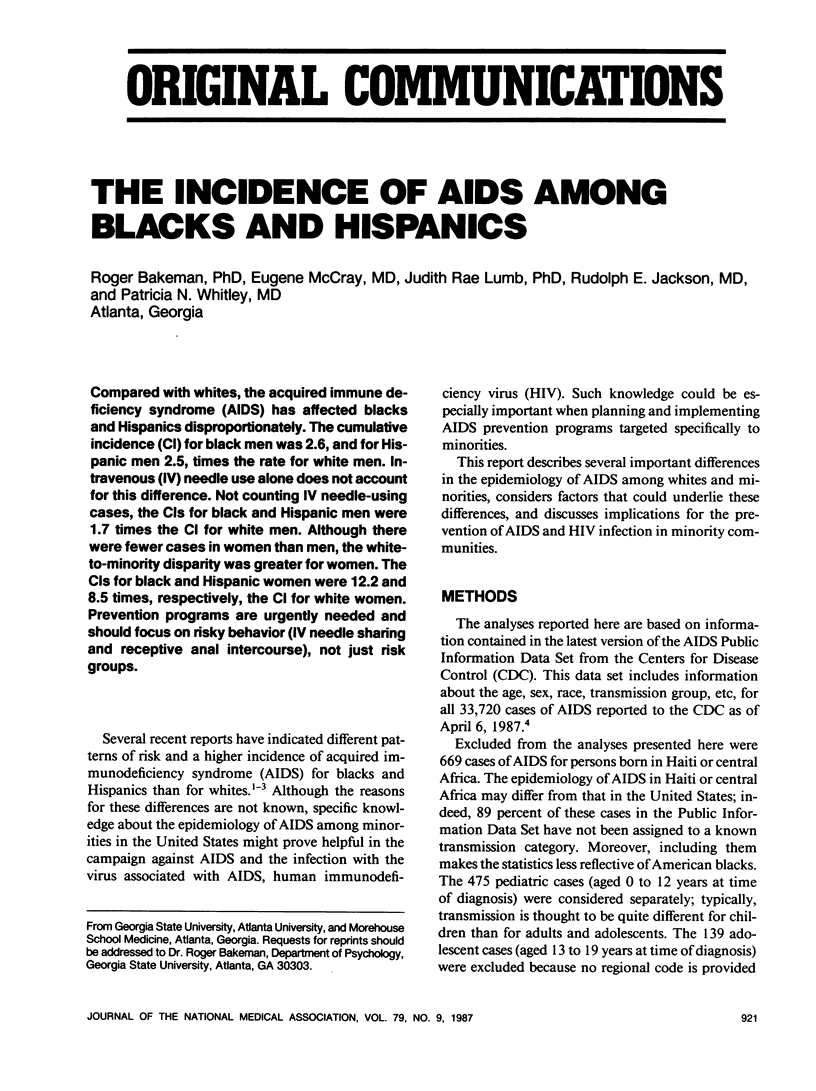

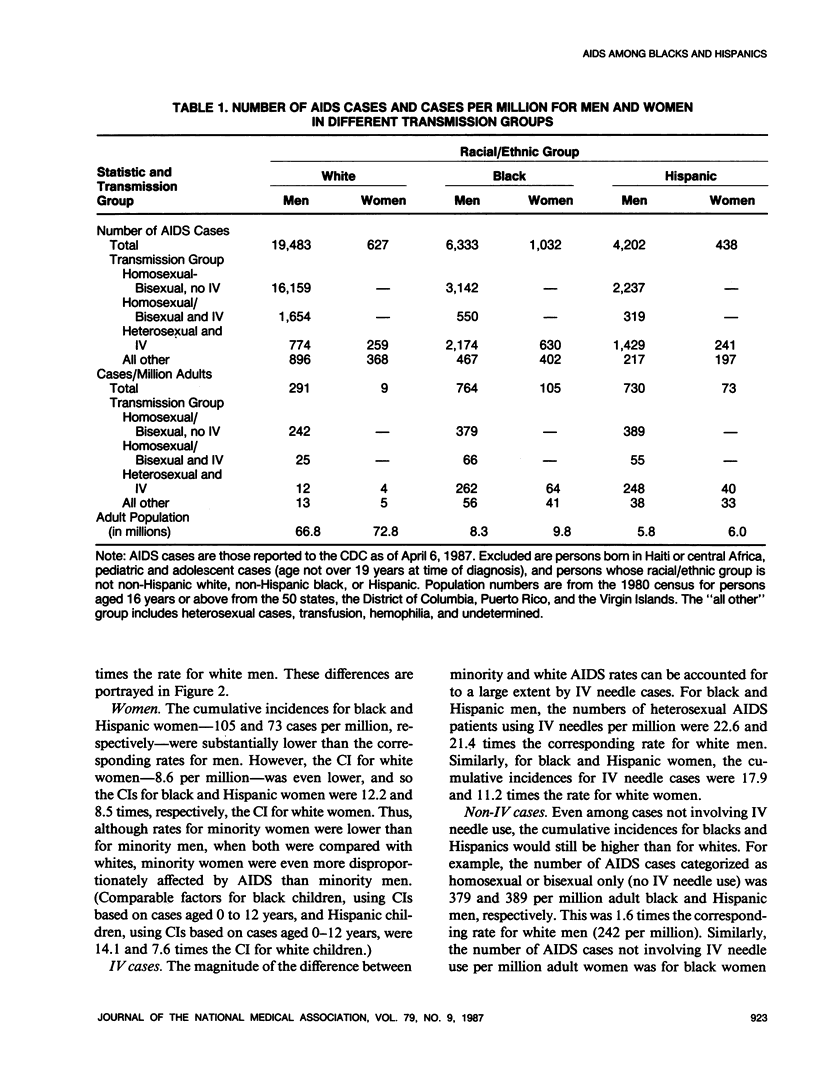
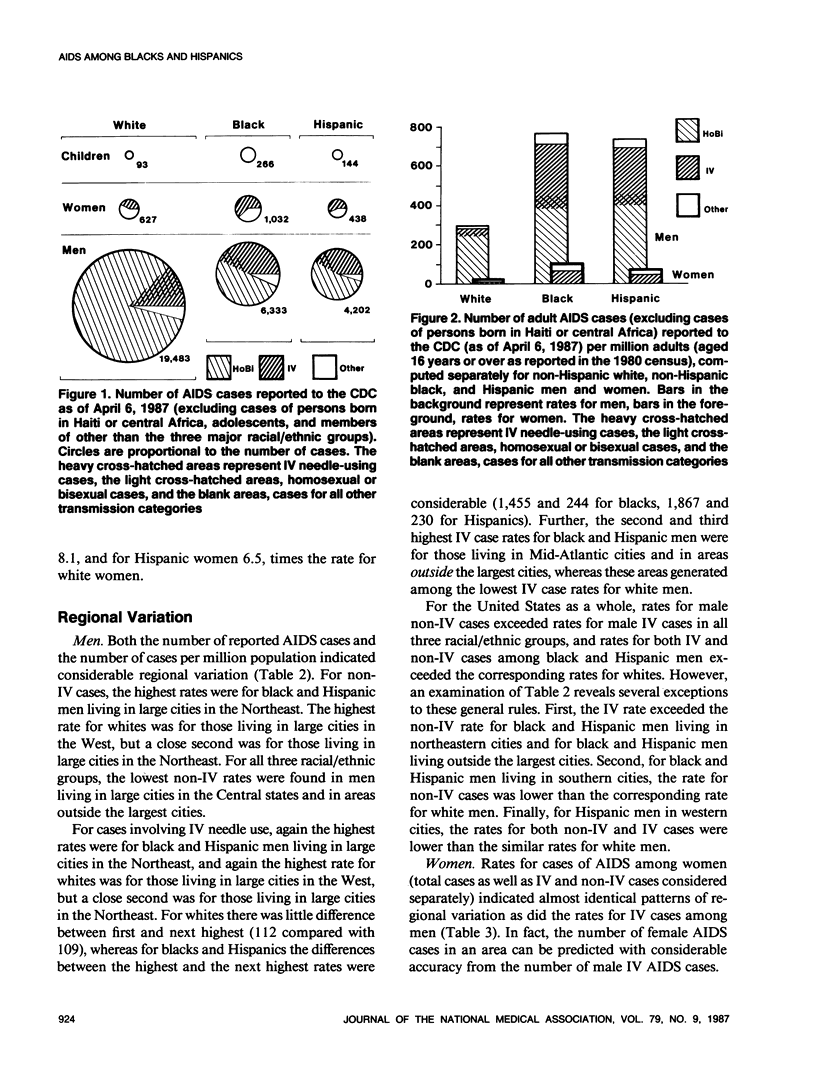
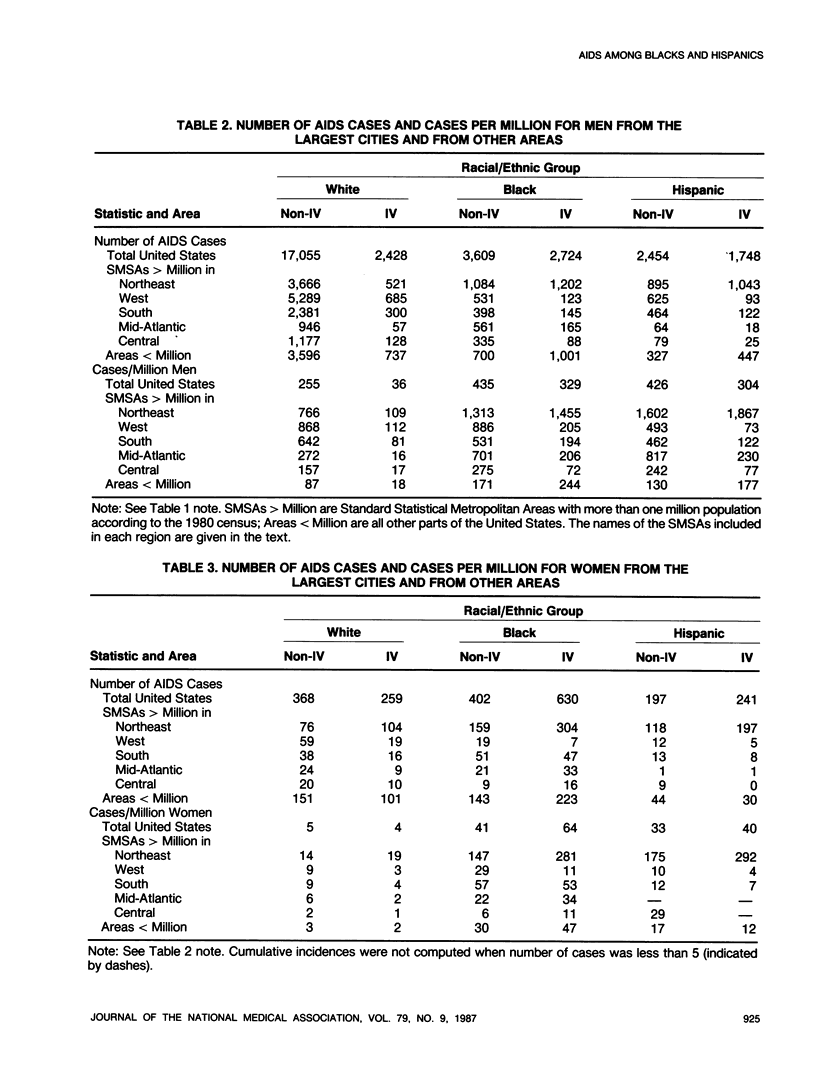

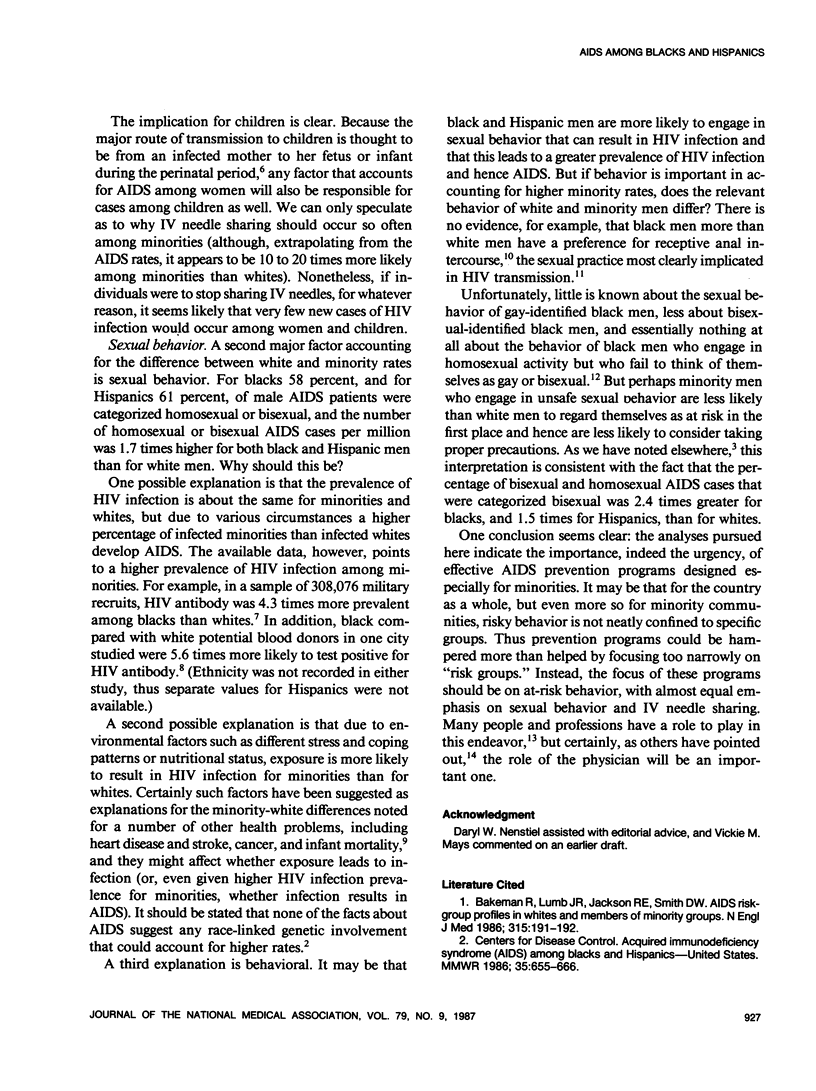

Selected References
These references are in PubMed. This may not be the complete list of references from this article.
- Bakeman R., Lumb J. R., Jackson R. E., Smith D. W. AIDS risk-group profiles in whites and members of minority groups. N Engl J Med. 1986 Jul 17;315(3):191–192. doi: 10.1056/NEJM198607173150312. [DOI] [PubMed] [Google Scholar]
- Bakeman R., Lumb J. R., Smith D. W. AIDS statistics and the risk for minorities. AIDS Res. 1986 Summer;2(3):249–252. doi: 10.1089/aid.1.1986.2.249. [DOI] [PubMed] [Google Scholar]
- Centers for Disease Control (CDC) Acquired immunodeficiency syndrome (AIDS) among blacks and Hispanics--United States. MMWR Morb Mortal Wkly Rep. 1986 Oct 24;35(42):655-8, 663-6. [PubMed] [Google Scholar]
- Centers for Disease Control (CDC) Human T-lymphotropic virus type III/lymphadenopathy-associated virus antibody prevalence in U.S. military recruit applicants. MMWR Morb Mortal Wkly Rep. 1986 Jul 4;35(26):421–424. [PubMed] [Google Scholar]
- Curran J. W., Morgan W. M., Hardy A. M., Jaffe H. W., Darrow W. W., Dowdle W. R. The epidemiology of AIDS: current status and future prospects. Science. 1985 Sep 27;229(4720):1352–1357. doi: 10.1126/science.2994217. [DOI] [PubMed] [Google Scholar]
- Hendee W. R., Schwarz M. R. AIDS and the physician. Science. 1986 Oct 31;234(4776):529–530. doi: 10.1126/science.2876519. [DOI] [PubMed] [Google Scholar]
- Mays V. M., Cochran S. D. Acquired immunodeficiency syndrome and black Americans: special psychosocial issues. Public Health Rep. 1987 Mar-Apr;102(2):224–231. [PMC free article] [PubMed] [Google Scholar]
- Morgan W. M., Curran J. W. Acquired immunodeficiency syndrome: current and future trends. Public Health Rep. 1986 Sep-Oct;101(5):459–465. [PMC free article] [PubMed] [Google Scholar]
- Winkelstein W., Jr, Lyman D. M., Padian N., Grant R., Samuel M., Wiley J. A., Anderson R. E., Lang W., Riggs J., Levy J. A. Sexual practices and risk of infection by the human immunodeficiency virus. The San Francisco Men's Health Study. JAMA. 1987 Jan 16;257(3):321–325. [PubMed] [Google Scholar]


